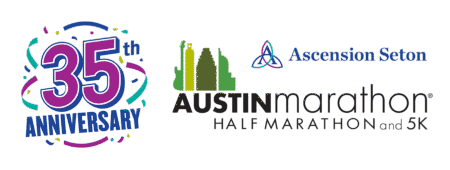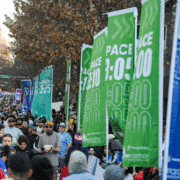Understanding Pacing: How to Find Your Ideal Marathon Pace
Running a marathon isn’t just about covering 26.2 miles—it’s about doing so at the right pace. Whether you’re chasing a personal record or aiming simply to finish strong, understanding pacing can make the difference between crossing the finish line with a smile or hitting the dreaded “wall.”
In this guide, we’ll explore what pacing is, why it matters, and how you can find your ideal marathon pace.
What Is Marathon Pacing?
Pacing is the speed at which you run each mile or kilometer of your marathon. It’s usually expressed as “minutes per mile” or “minutes per kilometer.” For example, if your goal is a 4-hour marathon, your average pace needs to be around 9:09 per mile (5:41 per km).
Running too fast early in the race can lead to burnout, while running too slowly may keep you from hitting your goal time. That’s why pacing is both a science and an art.
 Why Is Proper Pacing Important?
Why Is Proper Pacing Important?
-
Prevents Early Fatigue – Starting too quickly can drain your glycogen stores, leaving you struggling later.
-
Improves Endurance – Even pacing helps conserve energy for the final miles.
-
Boosts Mental Confidence – Knowing you’re on track keeps your mindset positive.
-
Maximizes Performance – The right pace helps you achieve your personal best marathon time.
 How to Find Your Ideal Marathon Pace
How to Find Your Ideal Marathon Pace
Finding the right pace depends on your fitness level, training background, and race-day goals. Here are proven strategies:
1. Use Recent Race Results
A half marathon or 10K race can give you a benchmark. Many runners use calculators like the McMillan Running Calculator or Jack Daniels’ VDOT tables to predict marathon pace based on shorter races.
2. Train with Marathon-Pace Runs
Incorporate runs at your goal marathon pace during training. For example, if you aim for a 4:00 marathon, practice running 6–10 miles at 9:09/mile to condition your body and mind.
3. Leverage the Long Run
During long runs, practice negative splits—start slower, then gradually increase speed. This mirrors ideal marathon pacing, where you conserve energy early and finish strong.
4. Listen to Heart Rate and Effort
A marathon should feel like a moderate effort (70–80% of your max heart rate). If you’re gasping for air early, you’re going too fast.
5. Consider Course & Conditions
Adjust for hills, heat, or humidity. Your ideal marathon pace on a flat, cool course may not be realistic in tougher conditions.
 Common Marathon Pacing Strategies
Common Marathon Pacing Strategies
-
Even Splits – Running the same pace every mile. Best for experienced runners.
-
Negative Splits – Start slower and finish faster. Great for beginners and those aiming to avoid burnout.
-
Run-Walk Method – Alternating running and walking intervals to maintain energy.
 Tools to Help You Pace
Tools to Help You Pace
-
GPS Watch or Running App – Track your pace in real time.
-
Pace Bands – Wearable bands with split times for your goal finish.
-
Pace Groups – Join an official pace group on race day for extra motivation and consistency.
Final Thoughts
Finding your ideal marathon pace is key to running your best race. The right pace balances endurance, efficiency, and mental strength—helping you conquer 26.2 miles with confidence.
Whether you’re aiming for a qualifier race or simply crossing your first finish line, practice pacing in training, trust your body, and stick to your plan on race day.



 Why Is Proper Pacing Important?
Why Is Proper Pacing Important? How to Find Your Ideal Marathon Pace
How to Find Your Ideal Marathon Pace Common Marathon Pacing Strategies
Common Marathon Pacing Strategies Tools to Help You Pace
Tools to Help You Pace



